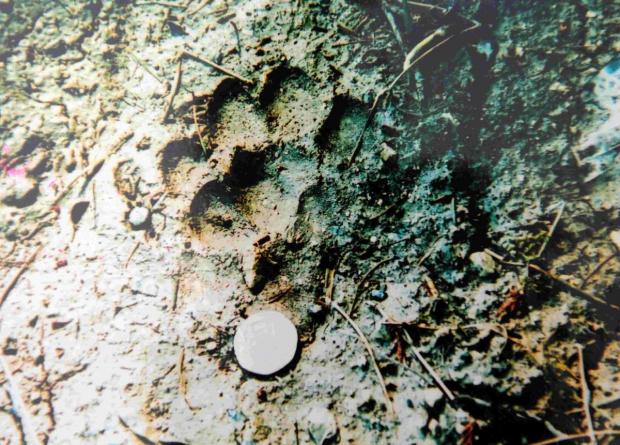Saturday 26th October 2013 By Emma Walker

COMPARISON: A telltale footprint
Sightings have been recorded across West Dorset over the years including the fabled “beast of Broadwindsor” spotted near Lewesdon Hill in the 1990’s.“We have had reports of black leopards, lynx, and pumas which are light brown,” said Mr McGowan who says he saw his first puma while badger-watching in 1984.
The Dorset man has amassed a lot of ‘evidence’ in the last thirty years, including images of half-eaten deer, astonishing faeces, mystery fur and paw-prints. He said he is now setting up expensive cameras across the county to capture footage and odd noises at night. “Big cats have made their home in Dorset and across Britain. This is clear from the number of farm animals killed,” Mr McGowan said.
Large droppings have been found to contain deer and rabbit fur and animal bones. The naturalist has uncovered dog remains in trees and paw prints the size of a man’s hand. To fuel his theory further, Mr McGowan has been bagging up evidence for DNA analysis. He claims to have already had positive test results which confirmed that he found leopard droppings in Dorset.
Big cats have roamed Britain for hundreds of years, according to Mr McGowan. Before the Dangerous Wild Animals Act in 1976, the wealthy could take their lion, tiger or cheetah for a walk around the park without needing a license. Many owners gave their pets to zoos or put them down but rumours started that some people released their animals into the wild where their offspring are thought to still roam.
Mr McGowan claims big cats were brought to Britain by the Romans and have escaped from travelling zoos and menageries for decades. He said: “The issue is confused now because they are hybrids, they have evolved.” He believes the authorities try to cover up the presence of big cats because “they don’t want the public to panic.”
source
No comments:
Post a Comment